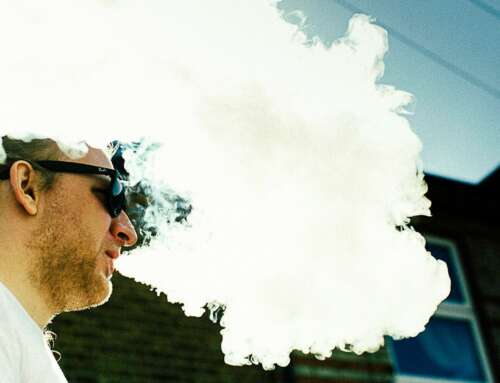In 2020, the COVID-19 pandemic has come to dominate the media, both domestically and abroad. Alongside increased attention on the pandemic, has come the viral spread of COVID-19 fake news online.
Many of these stories, as tantalising as they are, are patently false.

In reality, it was not the US government that created the virus. And it wasn’t the Chinese government either. And no, 5G has nothing to do with it whatsoever.
If you look for quick remedies, don’t get your hopes up. It turns out sipping water every 15 minutes does not help. Nor does receiving blessings through the TV screen. And to cocaine, just say no.
Misinformation is something that we might expect for any major event that captures people’s imagination, but in the case of COVID-19, the spread of fake news offers unique challenges and dangers to the public.
My research focuses on how innovation and new technologies (like social media, artificial intelligence, virtual reality) interact with consumer behaviour.
Unfortunately, these otherwise useful technologies can end up being abused. This is clearly the case with COVID-19 fake news on social media.
GOOD and BAD INTENTIONS
There are two major types of false information.
The first is disinformation, which is spread intentionally by people in bad faith. In the case of COVID-19, there has been disinformation blaming racial groups, illegal immigrants and even governments for the spread of the virus.

It appears certain political groups and state agents may wish to propagate chaos for the sake of political gains.
The other kind of fake news is misinformation, which is spread innocently despite being incorrect.
Examples of COVID-19 misinformation include misconstrued understandings of the disease, wishful thinking about false remedies and fanciful implications drawn on how the spread of the virus will play out.
Some of it has been mere speculation among otherwise well-meaning people who then spread their opinion as fact.
WHY ARE WE SO SUSCEPTIBLE TO FAKE NEWS?
Humans are generally very bad at detecting fake information. This is because fake news often looks like real news – and we think we recognise a pattern.
Fake news also has an advantage when it comes to sharing information. When sharing information online, we give things very little scrutiny. We are also more inclined to share bad news, and a lot of the news related to COVID-19 is bad.

One of the things we know from classic anthropological work is that misinformation thrives where people have little control over environmental threats – like volcanic eruptions, unpredictable weather patterns or disease.
Modern psychological research concurs: under uncertainty, people seek safety, security and order – to compensate for lack of control.
In the past, this kind of compensation might have been magical beliefs. But today, it is more likely to be fake news.
COVID-19 is unknown, uncertain and uncontrolled. There’s a clear threat to basic needs such as food, shelter, safety – and most importantly, staying alive.
As a result, information that is false, but seems to restore these basic needs, tends to spread quickly. Examples are quack remedies or rumours that the vaccine is just around the corner.
We also have a tendency to downplay factual information that is threatening.
This is something we’ve seen before with other health campaigns, such as on the dangers of cigarettes and alcohol consumption. Some people block out the real threat of COVID-19 by downplaying the risk, paying attention only to favourable pieces of information, for example, “I’m young, so this virus can’t hurt me” or “It’s no worse than the flu”.

Another threat COVID-19 poses is to our basic need for social affiliation. Thoughts of contagion trigger suspicion and fear of others, especially people that are different from us.
One example is rumours that the viciousness of the Italian outbreak is driven by throngs of illegal immigrants from the Middle East.
Our sense of isolation as a result of quarantining and social distancing measures also makes us more likely to accept information from friends and family without scrutiny.
All of these factors are exacerbated by the sometimes unclear messages from officials and leaders.
For instance, official health advice on symptoms and prevention, though definitely useful, has been rather vague; we often hear terms like ‘flu-like symptoms’ and ‘keep a social distance’. But if you’ve never had the flu or the exact measurements of social distancing keeps changing, it can get confusing.
The broadness of these messages may be due in part to the fact that scientific answers are not (yet) available for the many practical questions people have; What are the chances of contracting the virus while grocery shopping? Do I need to disinfect vegetables, product packages or banknotes? Should I wash my clothes after using public transport?
A complicating factor is that the official advice we’re getting is constantly changing as we find out more about COVID-19.

A recent example is the debate over whether we should or shouldn’t we wear face masks?
The Centre for Disease Control in the US has now revised its former recommendation against wearing masks in public. At the same time, Australia’s deputy chief medical officer Paul Kelly has told Australians that they shouldn’t wear face masks.
Although this advice seems to be motivated by concerns over the short supply of medical face masks for the Australian health care system, he went onto say “using a mask incorrectly can actually make it more dangerous.”
This, in a narrow sense, is true: using anything incorrectly can be dangerous. The broader implication, however, that wearing masks is somehow “dangerous” flies in the face of new evidence complied by Yale researchers showing that wearing face masks reduces the spread of COVID-19 and saves lives.
Australian health officials need to revise their recommendations to align these messages with emerging scientific evidence. All the more so because when the official messages are confusing, people turn elsewhere. Like social and fringe media.
Fake news loves information voids like this – and fills them with balderdash.

WHERE DO WE TURN?
We’re at a time when knowing the facts could literally save your life. But, unfortunately, once misinformation gets a foothold it is very difficult to correct.
In fact, attempts to correct fake news often strengthen it. If we want to address COVID-19-related fake news there are really three things we need to do.
The first is to cut the supply of false information. Governments play a key role here, in providing detailed, clear, and transparent official information that crowds out fake news.
Governments often avoid communicating like this, to save face or avoid panic, but the reality is that accessible, reliable and plentiful official information is critical to curtailing the fake kind.
The second strategy is to block people’s access to view fake news where they could appear by working with social media platforms. Facebook has an ongoing program that aims to address this, whether that’s successful or not remains to be seen.
Finally, and perhaps most importantly, we as consumers of information need to practice vigilance. Ideally, this would mean fact-checking everything that hits our screen, using reputable fact-checking websites such as AFP, Snopes and others.
If this is too difficult, we can still do two simple ‘information hygiene exercises’ – think of them like the mental equivalent of hand washing and distancing.

When encountering new information, take a momentary pause and ask yourself:
1. Am I just mindlessly accepting incoming content without adequate scrutiny of source, facts and format?
2. Am I believing this because cold facts warrant it or because it feels good to believe it?
We will need all of these strategies if we want COVID-19 misinformation to stop spreading.
In the meantime, stay safe, be careful and think about what you’re sharing online.
This article was first published on Pursuit. Read the original article.
Feature image: Pixabay







Leave A Comment